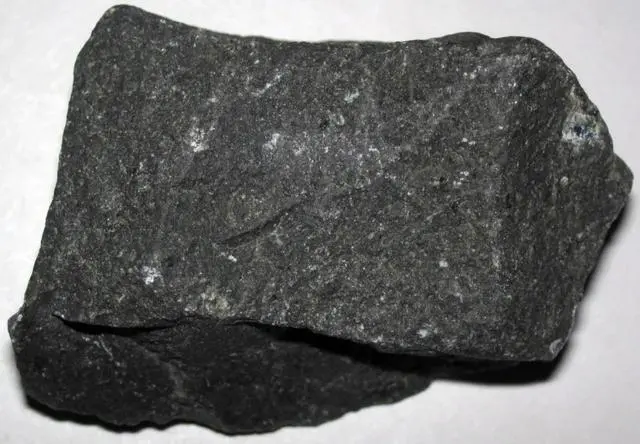World’s first commercial carbon fibre metro train launched in Qingdao of China
On June 26, CETROVO 1.0 Carbon Star Express, a carbon fibre metro train developed by Sifang Joint Stock Company and Qingdao Metro Group for Qingdao Metro Line 1, was officially released in Qingdao, which is the world’s first carbon fibre metro train used for commercial operation. The car has a weight reduction of 11% compared with traditional metro vehicles, with lighter and more energy-saving and other significant advantages, leading the metro train to achieve a new green upgrade.
In the field of rail transportation technology, lightweighting of vehicles, i.e. reducing the body weight as much as possible under the premise of guaranteeing the performance of vehicles and lowering the energy consumption of operation, is the key technology for realising the greening and low-carbonisation of rail vehicles.
Traditional metro vehicles mainly use steel, aluminium alloy and other metal materials, constrained by the material characteristics, facing the bottleneck of weight reduction. Carbon fibre, because of its light weight, high strength, anti-fatigue, corrosion resistance and other advantages, known as “the king of new materials”, its strength is more than 5 times that of iron and steel, but the weight is less than 1/4 of the iron and steel, is an excellent material for the lightweight of rail vehicles.
Sifang Joint Vehicle Company, together with Qingdao Metro Group and other units, has tackled the key technologies of carbon fibre large and complex main bearing structure integrated design, efficient and low-cost moulding and manufacturing, all-around intelligent inspection and maintenance, and systematically solved the problems of engineering application, and realized the application of carbon fibre composite materials in the main bearing structure of commercial metro vehicles for the first time in the world.
The vehicle body, bogie frame and other main bearing structures are made of carbon fibre composite materials, achieving a new upgrade of vehicle performance, with lighter and more energy-saving, higher strength, stronger environmental adaptability, lower life cycle operation and maintenance costs and other technical advantages.
1、Lighter body and more energy-saving operation
By adopting carbon fibre composite materials, the vehicle achieves significant weight reduction. Compared with the traditional metal metro vehicles, the carbon fibre metro vehicle body weight reduction of 25%, the bogie frame weight reduction of 50%, the entire vehicle weight reduction of about 11%, the operation of the energy consumption by 7%, each train can reduce carbon dioxide emissions of about 130 tonnes per year, equivalent to 101 acres of afforestation.
2、Higher strength, longer structural life
The vehicle adopts new carbon fibre composite materials with higher performance, which improves the strength of the body while achieving light weight. At the same time, compared with the use of traditional metal materials, carbon fibre bogie frame components have stronger impact resistance and better fatigue resistance, extending the service life of the structure.
- Stronger environmental adaptability
The lighter body enables the train to have better driving performance, which not only meets the line’s more stringent axle weight restriction requirements, but also reduces the wear and tear on wheels and tracks. The vehicle also adopts advanced active radial technology, which can actively control the vehicle’s wheelsets to pass through curves along the radial direction, significantly reducing wheel and rail wear and noise. The use of more wear-resistant, more heat-resistant carbon ceramic brake discs to achieve weight reduction while meeting the more demanding braking performance needs.
- Lower life cycle operation and maintenance costs
Thanks to the application of carbon fibre lightweight materials and new technologies, the wheel and rail wear of carbon fibre metro trains is significantly reduced, which significantly reduces the amount of vehicle and track maintenance. At the same time, through the application of digital twin technology, the SmartCare intelligent operation and maintenance platform for carbon fibre trains has realized the self-detection and self-diagnosis of the safety, structural health and operational performance of the whole vehicle, improving the operation and maintenance efficiency and reducing the operation and maintenance costs. The whole life cycle maintenance cost of the train has been reduced by 22%.
In the field of carbon fibre technology for rail vehicles, SINOTRUK Sifang, taking advantage of its industrial strengths, has built up a full-chain R&D, manufacturing and validation platform through more than 10 years of R&D accumulation and collaborative innovation among “industry, academia, research and application”, forming a complete set of engineering capabilities from carbon fibre structural design and R&D to moulding and manufacturing, simulation, testing and quality assurance, and providing a one-stop solution for the whole life cycle. Provide one-stop solution for the whole life cycle.
At present, the carbon fibre metro train has completed the factory type test. According to the plan, it will be put into passenger demonstration operation in Qingdao Metro Line 1 in the year.
At present, in China’s urban rail transport field, how to minimise energy consumption, reduce carbon emissions, to create a highly efficient low-carbon green urban rail, is the industry’s top priority. This puts forward a higher demand for lightweight technology for rail vehicles.
The introduction of commercial carbon fiber underground trains, promote the main bearing structure of underground vehicles from steel, aluminum alloy and other traditional metal materials to carbon fiber new material iteration, breaking the traditional metal materials structure weight reduction bottleneck, to achieve China’s underground train lightweight technology of a new upgrade, will promote China’s urban rail transit green low-carbon transformation, help urban rail industry to achieve the “dual-carbon It will play an important role in promoting the green and low-carbon transformation of China’s urban rail transport and helping the urban railway industry to achieve the “dual-carbon” goal.










